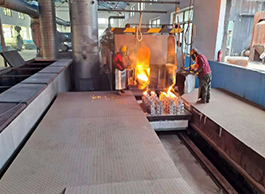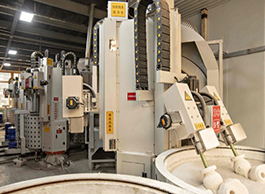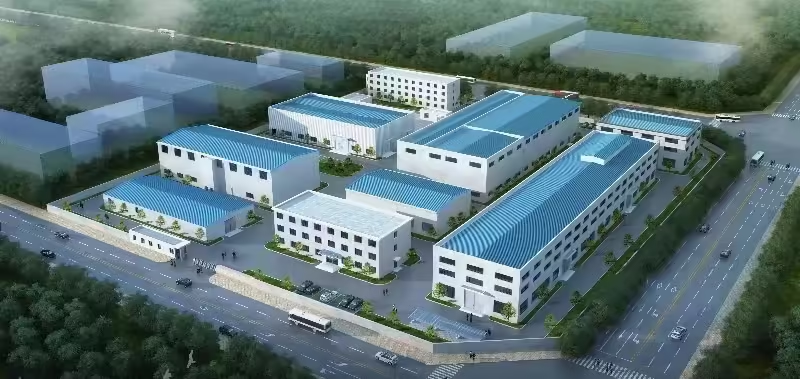Fundiciones de acero aleado: una guía completa sobre materiales, procesos y aplicaciones
Tabla de contenido
Introducción

Fundiciones de acero aleado are metal components produced by pouring molten alloy steel into molds, forming parts with high strength, durability, and wear resistance. By modifying the base composition of carbon steel with elements like chromium, nickel, or molybdenum, alloy steel offers tailored properties for demanding industrial applications.
What Makes Fundiciones de acero aleado Important?
They play a vital role in modern engineering, providing superior performance where ordinary carbon steels fail—such as in heavy machinery, mining equipment, power generation, and transportation.
Understanding the Basics of Fundiciones de acero aleado
The Concept of Alloy Steel
Alloy steel is steel combined with one or more alloying elements (Cr, Ni, Mo, Mn, V, Si, etc.) to enhance its mechanical and chemical properties.
These additions alter the steel’s internal structure, improving strength, toughness, corrosion resistance, and temperature stability.
How Alloy Steel Differs from Carbon Steel
While carbon steel relies mainly on carbon content for strength, alloy steel depends on the synergy between multiple elements.
As a result, alloy steel castings can achieve higher performance under stress, wear, or heat conditions compared to carbon steel castings.
Types of Fundiciones de acero aleado

Low-Alloy Steel Castings
Contain small amounts of alloying elements (typically <5%). They balance cost and performance, offering good strength and toughness for general engineering applications.
High-Alloy Steel Castings
Feature higher concentrations of alloying elements, such as chromium and nickel, delivering enhanced corrosion and heat resistance. Commonly used in marine and chemical environments.
Special-Purpose Alloy Castings
Designed for specific performance needs—such as wear-resistant, heat-resistant, or cryogenic steels—used in mining, energy, and aerospace sectors.
Alloying Elements and Their Effects
| Elemento | Function | Key Benefit |
|---|---|---|
| Cromo (Cr) | Increases hardness and corrosion resistance | Wear & rust prevention |
| Níquel (Ni) | Improves toughness and impact resistance | Enhanced ductility |
| Molibdeno (Mo) | Boosts high-temperature strength | Heat performance |
| Vanadium (V) | Refines grain structure | Increased strength |
| Silicio (Si) | Enhances oxidation resistance | Surface stability |
These elements work together to create microstructures that balance strength, toughness, and durability in alloy steel castings.
Manufacturing Process of Fundiciones de acero aleado

Melting and Refining
The process starts by melting raw materials in an electric arc or induction furnace. Refining techniques like AOD or VOD remove impurities and control composition.
Molding and Pouring
Sand or 3D-printed molds shape the liquid metal. Precise temperature and flow control ensure uniform solidification and minimal defects.
Tratamiento térmico
Post-casting heat treatment—such as quenching and tempering—adjusts the hardness and ductility. It transforms the internal structure to achieve target mechanical properties.
Machining and Inspection
Machining ensures dimensional accuracy, while non-destructive testing (UT, RT, PT) confirms internal quality and defect-free casting integrity.
Key Properties of Fundiciones de acero aleado
Resistencia mecánica
Alloy steel castings offer superior tensile and yield strength, ideal for components under high stress.
Toughness and Ductility
They retain impact resistance even in low temperatures or heavy-load environments.
Corrosion and Wear Resistance
Chromium and molybdenum additions provide enhanced surface protection against oxidation, abrasion, and chemical attack.
Comparison: Fundiciones de acero aleado vs Carbon Steel Castings
| Propiedad | Alloy Steel Casting | Fundición de acero al carbono |
|---|---|---|
| Fortaleza | Higher, customizable | Moderado |
| Resistencia a la corrosión | Excelente | Limitado |
| Heat Resistance | Alto | Moderado |
| Costo | Higher (due to alloy elements) | Más bajo |
| Aplicaciones | Heavy-duty, specialized | General-purpose |
Choosing between alloy and carbon steel castings depends on the balance of performance requirements, cost, and environmental conditions.
Aplicaciones comunes de Fundiciones de acero aleado
Equipos industriales
Used in turbines, valve bodies, pump casings, and pressure vessels where strength and heat resistance are essential.
Mining and Construction
Wear-resistant castings for crushers, mills, and excavators.
Transportation and Marine
Components like gears, axles, and propellers that endure stress and vibration.
Energía y generación de energía
Turbine housings, boiler parts, and fittings exposed to high temperature and pressure.
Quality Standards and Certification
Common standards for alloy steel castings include ASTM A148, ASTM A217, EN 10293, and ISO 3755.
Manufacturers typically implement ISO 9001 quality management systems, ensuring traceability, mechanical property verification, and material certification.
Innovations and Future Trends in Fundiciones de acero aleado

Smart and Digital Foundries
Integration of AI, sensors, and digital twins enables real-time quality monitoring and predictive maintenance.
Fabricación sostenible
Use of recycled steel, energy-efficient furnaces, and low-emission casting processes support green manufacturing.
Computational Alloy Design
Machine learning models and CALPHAD simulations are redefining alloy composition optimization, accelerating material innovation.
Conclusión
Alloy Steel Castings stand at the intersection of material science and industrial innovation. By combining multiple alloying elements and advanced manufacturing methods, they deliver unmatched strength, reliability, and adaptability. As digital foundries and sustainable metallurgy evolve, alloy steel will continue to shape the backbone of next-generation engineering and manufacturing.
PREGUNTAS FRECUENTES
What are Fundiciones de acero aleado used for?
They’re used in applications that require strength, wear resistance, or heat tolerance—such as turbines, pumps, and mining parts.
Son Fundiciones de acero aleado better than Carbon Steel?
Yes, for high-performance environments. Alloy steels outperform carbon steels in strength, durability, and corrosion resistance, though they come at a higher cost.
Poder Fundiciones de acero aleado rust?
While not immune, properly alloyed and treated steels (especially with chromium) resist rust far better than plain carbon steels.
Cómo están Fundiciones de acero aleado heat-treated?
They typically undergo quenching and tempering to achieve the desired hardness and toughness balance.
What’s the difference between cast and forged alloy steel?
Cast alloy steel is melted and poured into molds—ideal for complex shapes. Forged steel is deformed under pressure—better for uniform grain and higher fatigue strength.
How do I choose the right alloy for my casting?
Consider the environment (temperature, corrosion exposure, wear) and required mechanical performance, then select an alloy accordingly.
Manténgase conectado con nosotros

¡Gracias por leer! Esperamos que este blog te haya brindado información valiosa e inspiración sobre techos con paneles acústicos. Si disfrutaste del contenido y quieres estar al día de las últimas tendencias, consejos y novedades, nos encantaría conectar contigo en redes sociales.
📘 Síguenos en Facebook: Shanghai Leierwo Industria Comercio Co., Ltd.
Únase a nuestra creciente comunidad donde compartimos consejos de expertos, aspectos destacados de los productos y debates interactivos con profesionales y entusiastas del diseño de todo el mundo.
Sigamos conversando, ¡nos vemos allí!
Categorías de productos
- Piezas de válvulas
- Piezas de la bomba de agua
- Piezas de la caja de cojinetes
- Piezas de fundición a presión
- Productos para bombas de acero inoxidable
- Productos para bombas de hierro fundido
- Piezas de válvulas para automóviles
- Recambios para automóviles
- Piezas de válvulas para uso civil
- Piezas de bomba de vacío KF

